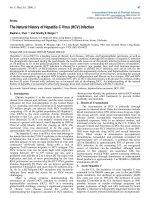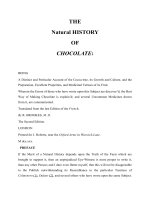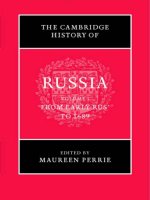THE NATURAL HISTORY OF BRITISH SHELLS V5, DONOVAN 1804
Bạn đang xem bản rút gọn của tài liệu. Xem và tải ngay bản đầy đủ của tài liệu tại đây (5.49 MB, 186 trang )
THE
NATURAL HISTORY
OF
BRITISH SHELLS,
•
INCLUDING
FIGURES and DESCRIPTIONS
OF ALL THE
SPECIES
HITHERTO DISCOVERED
GREAT BRITAIN,
IN
SYSTEMATICALLY ARRANGED
IN THE LINNEAN MANNER,
WITH
SCIENTIFIC
AND GENERAL OBSERVATIONS ON EACH.
=^
VOL.
V.
«=»*« 3.^^^:$£-<&-* ®« «
By
E.
DONOVAN,
F.L.S.
AUTHOR OF THE NATURAL HISTORIES OF
BRITI6H BIRDS, INSECTS, &C. &C.
LONDON:
PRINTED FOR THE AUTHOR,
AND FOR
AND
C.
RIVINGTQN, N°
62, ST.
PAUL'S CHURCH- YARD |
BY BYE AND LAW, ST. JOHN'S SQUARE, CLERKENWELL.
J803.
/\^/d-
5
Jw"
V
r
w******vyr** %
THE
NATURAL HISTORY
OF
BRITISH SHELLS.
PLATE
CXLV.
TEREDO NAVALIS.
SHIP
WORM.
GENERIC CHARACTER.
Animal Terebella, with two calcareous hemisphaerical valves cut
off before, and
two
lanceolate ones.
capable of penetrating into
Shell roundish, flexuous, and
wood.
SPECIFIC
CHARACTER
AND
SYNONYMS.
Shell very thin, cylindrical
and smooth.
4
TEREDo navalis
:
testa tenuissima
cylindrica hevi.
334. sp.
Teredo, Linn.
1.
Syst. Nat. 12. 2. p. 1267. n.
A 2
l.
Gmd.p,
3747*
PLATE
Dentalium
testa
membranacea
Suec.
I.
CXLV
Linn. Fn.
cylindracea, ligno inserta.
No. 1329.
p. 380.
Serpula testa cylindracea fiexuosa, lignum perforans.
Da
Teredo.
Costa. Brit. Conch, p. 21. sp. 11.
Nat. Tered. Busier, Phil, trans.
Sellius Hist.
Teredo navalis.
Ship-worm.
This destructive creature
Penn. Brit.
Zool. 4.
:
at present
it
naturalized British species
;
supposed to have been originally a
is
be considered with propriety as a
and
it
a fortunate circumstance that
is
warmer
at the head,
is
fur-
wiih which
bores with the utmost facility into the stoutest oaken plank, as
lies in
the water
;
danger
in the
it
:
hence the ravages
bottoms of ships are fraught with the greatest
and notwithstanding
;
it
and where a number of them attack the same piece
of wood, will in a few davs entirely destroy
of these animals
it
climates.
animal, a soft and almost shapeless gelatinous body,
nished with a calcareous process, or augur,
it
Eu-
may
does not thrive so well with us as in
The
.
No. 160.
native of the East-Indies, and from thence introduced into the
ropean seas
61
all
the precaution of sheathing the
bottoms of ships with copper, they insinuate themselves through the
smallest
Where
cavities,
the
and lodge themselves securely
work of
the animal
rounded and closed, and as
shell
till,
length
;
as
Gmelin
says,
first
commences, the
it
in
the
shell
is
timbers.
obtusely
continues to lengthen
it
proceeds
it
becomes from four
its
to six inches in
—we have seen one of them whose progress through
the solid
plank had not been interrupted, that had grown nearly to the length
<>t
eighteen inches.
It is said
that sheets of paper dipped in tar,
applied to the ship's bottom, will prove a
more
and
effectual preservative
PLATE
CXLV.
of the timber than the usual sheathing of copper, and an extensive
late established for the preparation
manufactory has been of
article
sume
how
:
far
it
mav
we
prove ultimately successful
of this
cannot pre-
but perhaps both the paper and the copper might be
to imagine,
employed together with greater advantage than
either of those articles
separately.
we
For a more complete history of the Teredo than
we
otherwise possessed,
are indebted to a remarkable circumstance
that occurred about sixty years since
land were found to be
injured
ravages of this creature
upon
their history
the piles on the coast of Hol-
:
to a
very alarming degree, by the
and beside several other ingenious
;
it,
under the
Xylophagi Marini,
seu,
anatomy of the animal
is
illustrated
title
in
of Histor'a Naturalis
1733
;
in
book the
this
with Plates, and upon the whole
his observations deserve the attention of the curious reader.
account was also written by Baster, and published
actions of the Royal Society of
London,
seem
and exhibit the same appearance
to think peculiar to the species
aperture divided
by a
delicate, or thin,
as
brittle.
A3
;
The
Another
the Trans-
quoted above.
shells, are
Kammer
Utriadus
partition in the middle.
and very
in
in vol. 61, as
In our specimens, the apertures, or mouths of the
perfect,
tracts
and the calamity they had occasioned, Sellius
published an account of
Teredines,
might have
and
very
Gmdm
namely, an oval
shell
is
extremely
lb
PLATE
CXLVI.
PATELLA INTORTA.
INCLINING PATELLA, OR LIMPET.
GENERIC CHARACTER.
Animal Limax.
Shell univalve subconic
and without
spire.
CHARACTER
SPECIFIC
AND
SYNONYMS.
Shell entire, ovate,
furrowed
what
Patella intorta
:
ribs
reflexed and obtuse.
inclining
is
costis sub-imbri-
;
:
with an elevated
shell,
slightly
the vertex bending, but not hooked.
Perm. Brit.
shell
some-
vertice sub-refiexo obtuso.
striated
This
slightly imbricated, vertex
testa integris ovata, sulcata:
catis,
Patella intorta,
:
Zool.
described by Pennant,
Angl^sea, found on the shores."
who
It is a
acquaints us
very rare
shell,
it
"
inhabits
but has been
taken also on the western coast, and communicated
by
J.
Laskey,
Esq. of Crediton, Devonshire.
The
figure of Patella intorta, in the British Zoology,
very indifferent
:
is
certainly
but having examined the shell Mr. Pennant de-
a 4
PLATE
scribes,
we
have no hesitation
CXLVf.
in saying that
it
is
not the Patella
mammillaris of Gmelin, as some conchologists imagine.
we
of the
latter
tainly
known
t.
537. fig. 17
millaris
is
to
;
are likewise in possession of,
be natives of
country.
and in Martini. Conch.
very accurately figured
of them, with the
very
this
shell figured
clearly that they
;
1.
/.
Specimens
but they are not cer-
— In
Lifter
Conch,
l.f. 58, 59. P.
mam-
and a slight'comparison of either
in the
annexed
plate, will
cannot be of the same species.
prove
PLATE
CXLVIL
PATELLA LACUSTRIS.
LAKE LIMPET.
GENERIC CHARACTER.
Shell univalve, subconic, without spire.
Animal Limax.
SPECIFIC
CHARACTER
AND
SYNONYMS.
membranaceous
Shell very entire, oval,
Patella lacustris
:
:
Syst. Nat. T.
fluviatilis,
membranacea
testa integerrima ovali
mucronato rerlexo.
Patella
crown pointed and
fusca,
vertice
1.
Fn.
suec.
reflected.
:
vertice
2200. — Gmel.
p. 6.
mucronato, incurvo, inflexoque.
Gualt. Ind. Conch, tab.
Patella fluviatilis, exigua, fubflava,
vertice
4. Jig.
B.
mucronato, inflexoque.
List. Hist. Conch, tab. l^l.jig. 39.
Morton Northamp.
Patella lacustris, Penn.
Patella
integra,
exigua,
p. 417.
Brit. Zool. 4. No. 149.
fusca,
fragilis,
vertice
inflexo.
Da,
Costa. Brit. Conch. 1. tab. 2. Jig. 8. 8.
This
is
colour, that
a thin and brittle shell,
is
of a pale brown, or whitish
found on aquatic plants, in most ponds and
rivers in
PLATE
Europe
as
:
in
Gmelin
it is
England
describes
each of which
is
it,
plentifully
in
some
The animal,
places.
has two truncated and concealed tentacula,
us, that
and
they couple in September,
on stones and other bodies
in the
in each of
gelatinous globules,
consists of
little
small shells
may be
size in the
common
furnished with an eye at the inner angle.
Dr. Lister informs
spawn
very
CXLVIL
annexed
distinguished.—The shell
plate.
is
water
which
this
:
it is
shewn of
fix their
said
spawn
many
the natural
m
'/itmto'i
PLATE
CXLVIII.
LEPAS TINTINNABULUM.
BELL ACORN SHELL.
GENERIC CHARACTER.
Animal Triton.
of
Shell
many
valves,
by a stem or
affixed
broad base.
SPECIFIC CHARACTER.
AND
SYNONYMS.
Shell conic, obtuse, rugged and fixed.
Lepas Tintinnabulum
:
testa, conica, obtusa,
Lud. Ulr. 466.
rugosa
fixa.
Mus.
n. 3.
Balanus major angustus purpurascens,
capitis apertura valde patente.
List. If. Conch, tab. 433. fig. 285.
Balanus major.
Tne
conic centre
Mus.
Balanus maximus ore patulo.
B. tintinnabuliformis et B.
shell.
Grew, Mus. p.
Petiv. p. 82.
148.
No. 803.
calyciformis orientalis.
Phil. Trans,
1758. p. 11. tab. $4>.fig. 8, 9.
B. ore hiante magnus.
Gland de Mer
clochette^
Borlase. Corn. p. 27.
D'Avila Cab.
Balanus Tintinnabulum
Bell.
p. 404.
No. 022.
B. major purpurascens, co-
nicus, angustus tintinnabuliformis, apertura valde
patente.
Da
Costa Brit. Conch, p. 250. sp. 70.
Balanus Tintinnabulum Bell. Penn.
Brit- Zool. T. 4. No. 8,
PLATE
This kind of Balanus
toms of ships
in
warmer
in
said to
A
supposed variety of
be found in the North
tions of our seas
present
is
is
is
that
it
originates
seas,
it
admitted
we
of a dirty whitish colour,
by Chemnitz.
among
by Borlase, Pennant and
the best apology
Work.
opinion
and should not be considered an indigenous
Balanus Tintinnabulum
confess
found affixed in large clusters to the bot-
seas, but the general
climates,
British species.
is
our
is
CXLVIII.
Da
the testaceous produc-
Costa, and this
have to offer for inserting
we must
it
in the
J
4J
PLATE
CXL1X.
VENUS LACTEA.
MILKY VENUS SHELL,
GENERIC CHARACTER.
Hinge furnished with
Bivalve.
three teeth
two near each
;
other,
the third divergent from the beaks.
CHARACTER.
SPECIFIC
Shell lentiform,
somewhat compressed, with
concentric
Venus lactea
:
and
striae,
slightly
testa lentiformi
truncated anteriorly.
sub-compressa
new and
:
striis
concentricis
antrorsum subtruncata.
crassis elevatis obtusis,
-This appears to be a
thick, elevated, obtuse
undescribed British
species-
of Venus,
approaching, in some particulars, to others of the same genus found
on our
coast, although
ridges
large, elevated,
differing
in
having the concentric
and obtusely rounded.
ample, in V. borealis, and V. cancellata
ridge to
an acute edge
to bear a
much
;
coast.
rise in a thin
striae,
strong analogy to our shell
:
Venus
present species,
we
are informed,
laccea
is
thick, but minute
is
for ex-
at first sight
thicker and heavier shell than
any other resembling
V. Exoieta has
or
membranaceous
and the former of these seems
which we are acquainted.
Our
The
stride
also
it,
a
with
striae.
found on the western
ISO
**









